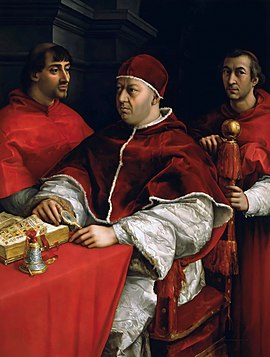The Palazzo Vecchio – also known as the Signoria – dominates the Piazza della Signoria and is one of the most interesting buildings in Florence. It has been a seat of power since the 13th century and it still functions today as the City Hall, as well as being a museum. This post explains what there is to see there, including rooms outlining early Medici history, the stunning 15th century Sala dei Cinquecento, the private apartments of Duke Cosimo I and his enormous family, Machiavelli’s office and the prison where Cosimo di Medici was held captive.
the palazzo vecchio: a little history



The Palazzo dei Priori – later the Signoria – was begun in 1299, intended as a building from which Florence would be governed. Early significant moments in its history include the imprisonment of Cosmio di Medici (see last episode) and the period when Nicolo Machiavelli worked here as Florence’s Chancellor. A new Golden Age began in 1540 when Duke Cosimo I moved in with his wife Eleonora di Toledo and their court, sending the strong political message that he was taking control of Florence after the murder of his predecessor.
Duke Cosimo commissioned the architect Giorgio Vasari for a magnificent makeover which took 20 years and when he eventually moved to the even grander Palazzo Pitti, he instigated the Vasari corridor to connect his new home to his former office. This stunning piece of architecture still exists today and is an art gallery which you can visit, but only by booking ahead. Now the Medici were established in a new palace, the former one became known as the ‘old palace’ or Palazzo Vecchio.
palazzo vecchio … or signoria
The Palazzo Vecchio is also called the Signoria, after the council of 8 men which ruled Florence from 1293-1534. They were chosen by lottery every 2 months and led by a Chancelor (once Machiavelli!) and a Podestà, or magistrate brought from a neighbouring city as an arbitrator. In times of crisis, the Signoria bell would be rung to summon all male citizens over 14 to a Parlamento in the Piazza della Signoria to vote on what to do. It all sounds democratic, if sexist, but in fact the palazzo was a hotbed of intrigue and infighting as members of the wealthy ruling families all vied to secure positions of power and influence. (What’s the Italian for ‘plus ça change’?)
The Salone dei Cinquecento



The grandest room in the Palazzo Vecchio was built in the 15th century for large meetings of up to 500 people, with benches for citizens and pulpits for speechmaking. In 1540, Duke Cosmio I turned it into a Sala Grande where he could receive ambassadors and important guests. He had it decorated with portraits of his ancestors and inspiring scenes of Florentine and Tuscan history, such as the city’s victories over neighbouring Pisa and Siena. Giorgio Vasari, the architect, understood his brief: ‘Every day I draw for the Great Hall and facades, so that it will reflect all your mastery.’ Next door were the Quartiere Deglie Terrestri, guest apartments with lavish 4 poster beds.
rooms displaying medici history
The Sala di Cosimo di Medici is decorated with scenes from his life – his exile and triumphant return, the building of the San Lorenzo church and so on. Another room is dedicated to Lorenzo di Medici and paintings show him receiving gifts from foreign visitors, for example the Sultan of Cairo who sent – as a chronicler put it – ‘cases, jewels, parrots, monkeys, camels … and a giraffe’. The Sala di Papa Leone celebrates the Medici family’s first pope, Giovanni di Medici, who became Leo X and it’s decorated with a painting of his triumphal entrance into Florence when passing through as pope on his way from Rome to Bologna.
the ducal appartments


These were the private apartments of Duke Cosimo, his wife Eleonora di Toledo, their 11 children and their various servants, ladies-in-waiting and wardrobe masters. They include Eleonora’s private chapel and a flavour of life under the extremely devout duchess was left to us by her secretary, Pier Francesco Riccio, who wrote that ‘The Duchess spends time on business, entertaining women who visit her and in prayer, so I feel like I am in a cloister’.
The Cancelleria and the Sale delle Carte Geografiche



The Palazzo Vecchio has more splendid rooms. The Cancelleria, the seat of former chancellors, was once Machiavellis’s office. It’s a sparse room, but does contain a portrait of him and a bust made from a cast of his death mask. (Machiavelli is the subject of the next episode). The Sale delle Carte Geografiche was another of Duke Cosimo’s grand projects. He commissioned this map room in the mid 16th century to ‘put together once and for all these things both of heaven and of earth, absolutely exact and without errors’. His grand scheme for ‘maps of all the known world’ and 48 constellations on the ceiling, were never fully finished, but the rooms are still fascinating.
the Arnolfo Tower
The Signoria Tower, known as the Torre Arnolfo, is a symbol of the city, dominating the skyline over the Piazza della Signoria. It was built as a defensive structure, but also as a symbol of power, for it was much higher than any tower the citizens of Florence were permitted to build. You can climb its 223 steps, past the cell which served as Cosimo di Medici’s prison, to the top to see the bells which were rung out on all significant occasions and to enjoy wonderful views of the square below.
Listen to the POdcast
Reading suggestions
Florence, the Biography of a City by Christopher Hibbert
The Medici by Paul Strathern
The Medici by Mary Hollingsworth
links for this post
Palazzo Vecchio
Booking to visit the Vasari Corridor
Previous episode The Piazza della Signoria
Next episode Advice from Machiavelli
Last Updated on April 7, 2024 by Marian Jones






